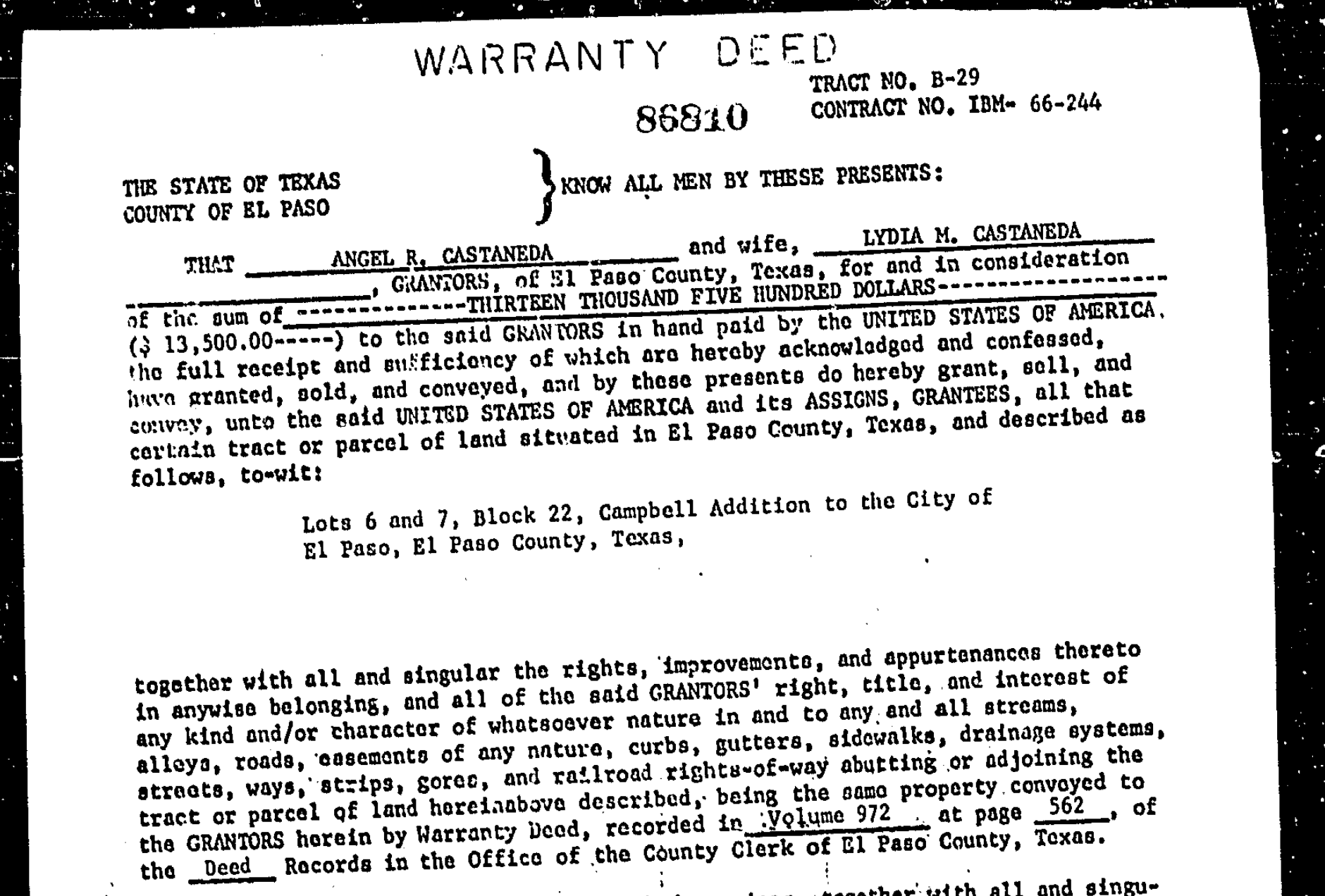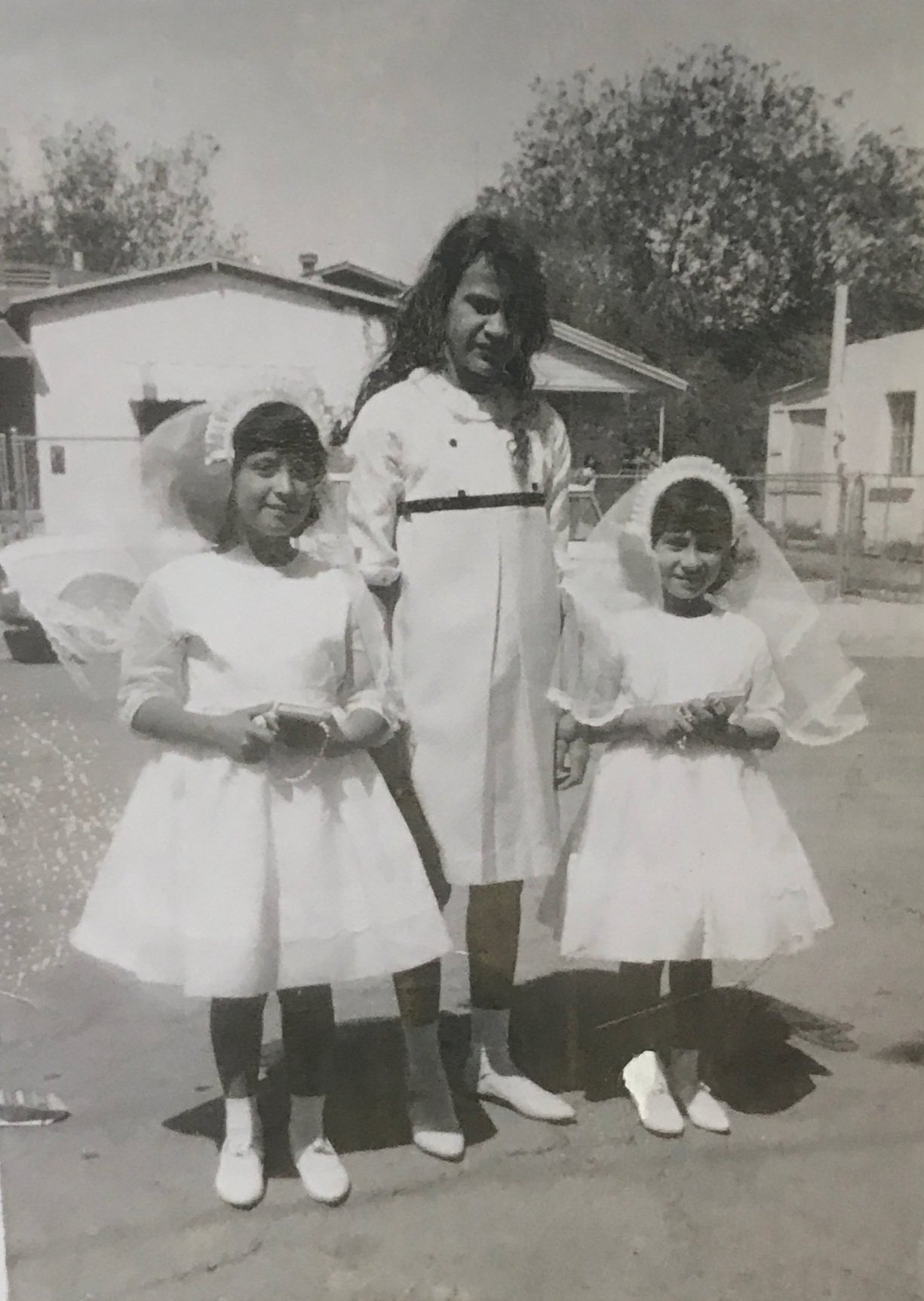Castañeda Family
Angelo R. Castañeda and his wife, Lydia Moreno Castañeda, purchased an empty lot in the Campbell Addition to the City of El Paso in 1950. On that lot, Angelo built an adobe house for his wife and four children: Manuel, Lupe, Margaret, and Maria Elena. As adults, the children remembered the home as “the long house.”
The Castañeda house stood at 207 S. Oregon Street on the corner of Oregon and 10th Avenue in Segundo Barrio—an area of the historic Second Ward that is not commonly known for having been condemned by the Chamizal Treaty.
Although this area of Segundo Barrio was not ceded to Mexico, parts of 9th Avenue, 10th Avenue, and 11th Avenue (shown in the below map south of red line) were condemned by the settlement to make room for the treaty’s urban planning initiatives. This included the concrete border canal, the Border Highway, and the new Santa Fe Port of Entry.

The Castañeda house had not always been “a long house.” But when an uncle needed a roof over his head, Angelo added an extra room to the house by building it directly south of the property. He would do so again when Lydia’s father, Raul, also moved in. By 1960, eight people were living in what had indeed become the long house on S. Oregon Street.
And together they made it a home.
“
Photographs courtesy of Maria Elena Castañeda Soto and Castañeda family.
Soon after Raul, who worked as a welder with the Southern Pacific Railroad, moved in to the long house, he began installing custom iron rod fences and designs. One of those additions was a small sign that read “ 207 Castañedas.”
For years, this sign hung above the front door to the Castañeda house.
It was Lydia’s most cherished possession.
In 1964, Manuel Castañeda, the eldest child in the family, enlisted in the Marines. Shortly thereafter, he was sent to Vietnam.
When Angelo and Lydia received notice later that year that their property had been condemned by the Chamizal Treaty, they withheld this news from Manuel, fearing that it would be a distraction to him in combat. But when the family realized that the government’s buy-out offer was not enough to purchase a similar home elsewhere in El Paso, Manuel’s sister, Lupe, wrote a letter to her brother and had it sent to Vietnam. In that letter, Lupe asked her brother to write a letter to Texas Congressman Richard White. Tell him you are a solider, Lupe instructed Manuel. Tell him our family has always voted Democrat, that we voted for him, and that now we need his help.
Manuel received his sister’s letter while he was still in Vietnam, and did as Lupe had instructed. Please help my family, Manuel recalls writing to Congressman White. We may be poor and Brown, but please help us as you would any military family.
In 1965, the El Paso Times recognized Manuel for his service in Vietnam.
El Paso Times, September 10, 1965.
In 1966, while Manuel was still abroad fighting in Vietnam, the U.S. federal government purchased the Castañeda property for $13,500.
-

1950: Angelo & Lydia Purchase Property in Cambell Addition
-

1966: Angelo & Lydia sell their home to the United States of America














